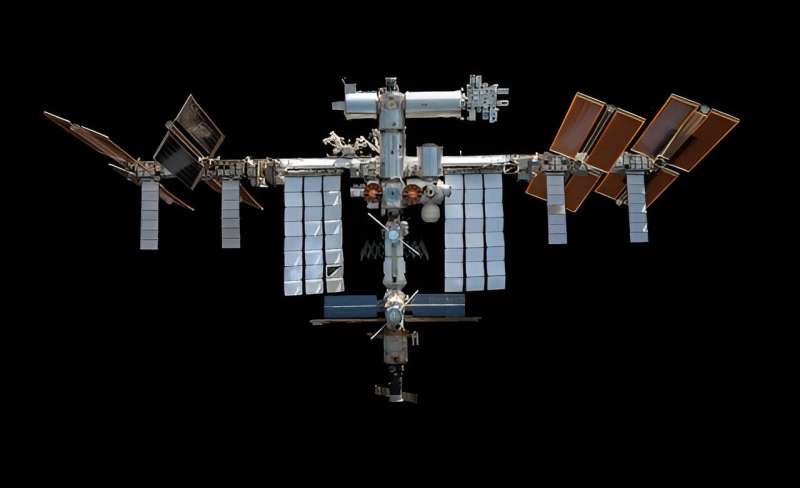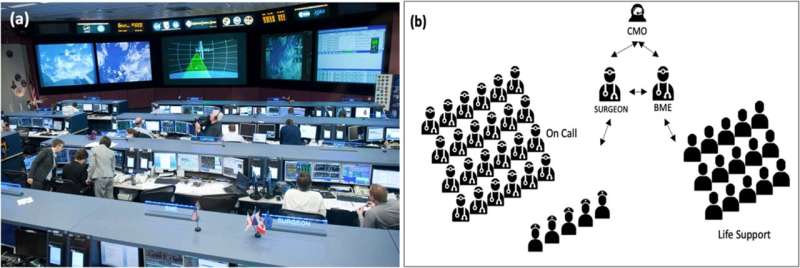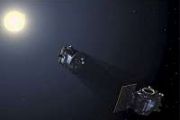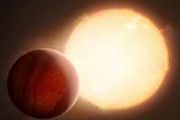
Copernical Team
China launches space collaboration forum with Latin America and the Caribbean
 Next week, Wuhan, Hubei province, will be the site of the first-ever China-Latin America and the Caribbean Space Cooperation Forum, as announced by the China National Space Administration (CNSA).
This inaugural two-day event, a collaborative effort among the CNSA, the Foreign Ministry, and the government of Hubei province, is scheduled to begin on April 24, which is celebrated as China's S
Next week, Wuhan, Hubei province, will be the site of the first-ever China-Latin America and the Caribbean Space Cooperation Forum, as announced by the China National Space Administration (CNSA).
This inaugural two-day event, a collaborative effort among the CNSA, the Foreign Ministry, and the government of Hubei province, is scheduled to begin on April 24, which is celebrated as China's S ICEYE secures substantial growth investment to bolster its SAR satellite fleet
 ICEYE, a leader in synthetic aperture radar (SAR) technology for Earth Observation, has successfully closed an oversubscribed $93M funding round aimed at expanding its SAR satellite operations. This recent financial boost will support the enhancement of the largest SAR satellite constellation globally and the development of new data and subscription services. This round is a continuation of the
ICEYE, a leader in synthetic aperture radar (SAR) technology for Earth Observation, has successfully closed an oversubscribed $93M funding round aimed at expanding its SAR satellite operations. This recent financial boost will support the enhancement of the largest SAR satellite constellation globally and the development of new data and subscription services. This round is a continuation of the Why Figuring Out How Potassium Is Destroyed in Stars Is Important to Understanding the Universe
 If you want to know where elements come from, look to the stars. Almost every element heavier than helium is formed through nuclear reactions in stars. But which stellar processes are responsible for these elements? Can we find patterns in how much of each element we observe in different astrophysical environments, like stars, galaxies or globular clusters?
Recently, our team of NC State r
If you want to know where elements come from, look to the stars. Almost every element heavier than helium is formed through nuclear reactions in stars. But which stellar processes are responsible for these elements? Can we find patterns in how much of each element we observe in different astrophysical environments, like stars, galaxies or globular clusters?
Recently, our team of NC State r Winchcombe meteorite's tumultuous space odyssey uncovered by nano-analysis
 Detailed nano-analysis has revealed the Winchcombe meteorite underwent significant transformations involving water interaction and repeated fragmentations during its journey through space, finally resting in an English pasture in 2021.
The collaborative research effort included scientists from the UK, Europe, Australia, and the USA, employing a suite of advanced analytical methods typicall
Detailed nano-analysis has revealed the Winchcombe meteorite underwent significant transformations involving water interaction and repeated fragmentations during its journey through space, finally resting in an English pasture in 2021.
The collaborative research effort included scientists from the UK, Europe, Australia, and the USA, employing a suite of advanced analytical methods typicall Astronauts slated for repair mission on space station's NICER telescope
 NASA has scheduled a spacewalk to repair the Neutron star Interior Composition Explorer (NICER), an X-ray telescope aboard the International Space Station, later this year. This marks the fourth instance of astronauts servicing a science observatory in orbit.
In May 2023, the NICER team identified a significant issue-a light leak allowing sunlight to penetrate and affect the telescope's se
NASA has scheduled a spacewalk to repair the Neutron star Interior Composition Explorer (NICER), an X-ray telescope aboard the International Space Station, later this year. This marks the fourth instance of astronauts servicing a science observatory in orbit.
In May 2023, the NICER team identified a significant issue-a light leak allowing sunlight to penetrate and affect the telescope's se Knot theory aids in mapping efficient space routes
 Scientists at the University of Surrey have devised a method to chart the most efficient routes for spacecraft, mirroring the way drivers use sat-nav to navigate on Earth. This new technique harnesses mathematics to outline potential paths from one orbit to another, sidestepping the need for extensive computational resources or trial-and-error approaches.
Danny Owen, from the Surrey Space
Scientists at the University of Surrey have devised a method to chart the most efficient routes for spacecraft, mirroring the way drivers use sat-nav to navigate on Earth. This new technique harnesses mathematics to outline potential paths from one orbit to another, sidestepping the need for extensive computational resources or trial-and-error approaches.
Danny Owen, from the Surrey Space NASA's Solar Sail Set for Space Voyage: Testing New Propulsion Method
 NASA is poised to launch its Advanced Composite Solar Sail System next week, utilizing a Rocket Lab Electron rocket from Launch Complex 1 on New Zealand's Mahia Peninsula. Scheduled for Tuesday, April 23, the mission seeks to explore solar propulsion by deploying a CubeSat into orbit approximately 600 miles above Earth, a significant ascent from the orbit of the International Space Station.
NASA is poised to launch its Advanced Composite Solar Sail System next week, utilizing a Rocket Lab Electron rocket from Launch Complex 1 on New Zealand's Mahia Peninsula. Scheduled for Tuesday, April 23, the mission seeks to explore solar propulsion by deploying a CubeSat into orbit approximately 600 miles above Earth, a significant ascent from the orbit of the International Space Station. Sidus Space Joins Orbital Transports Partner Program to Broaden Market Presence
 Sidus Space, Inc. (NASDAQ: SIDU), a diversified satellite and data service provider, has entered the Orbital Transports Partner Program, aiming to broaden its reach in the global space sector. This program unites various industry players, including suppliers and subcontractors, to address challenges in space missions, offering Sidus an enhanced distribution channel through the Orbital Transports
Sidus Space, Inc. (NASDAQ: SIDU), a diversified satellite and data service provider, has entered the Orbital Transports Partner Program, aiming to broaden its reach in the global space sector. This program unites various industry players, including suppliers and subcontractors, to address challenges in space missions, offering Sidus an enhanced distribution channel through the Orbital Transports The rising flood of space junk is a risk to us on Earth—and governments are on the hook

A piece of space junk recently crashed through the roof and floor of a man's home in Florida. Nasa later confirmed that the object had come from unwanted hardware released from the international space station.
The 700g, 10cm-long piece of hardware was expected to burn up, Nasa said. Even a relatively small piece of junk can cause considerable damage when falling from space.
This raises several important questions. Who is liable for damages caused by human-made objects that fall from the sky? Can anything be done to prevent this happening? Luckily, international treaties provide some answers to the first question, while recent developments help with the second.
A clinical decision support system for Earth-independent medical operations

































